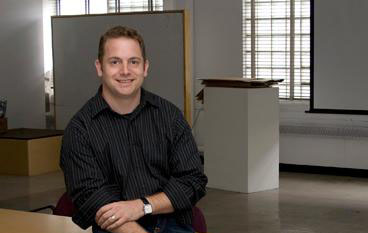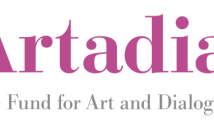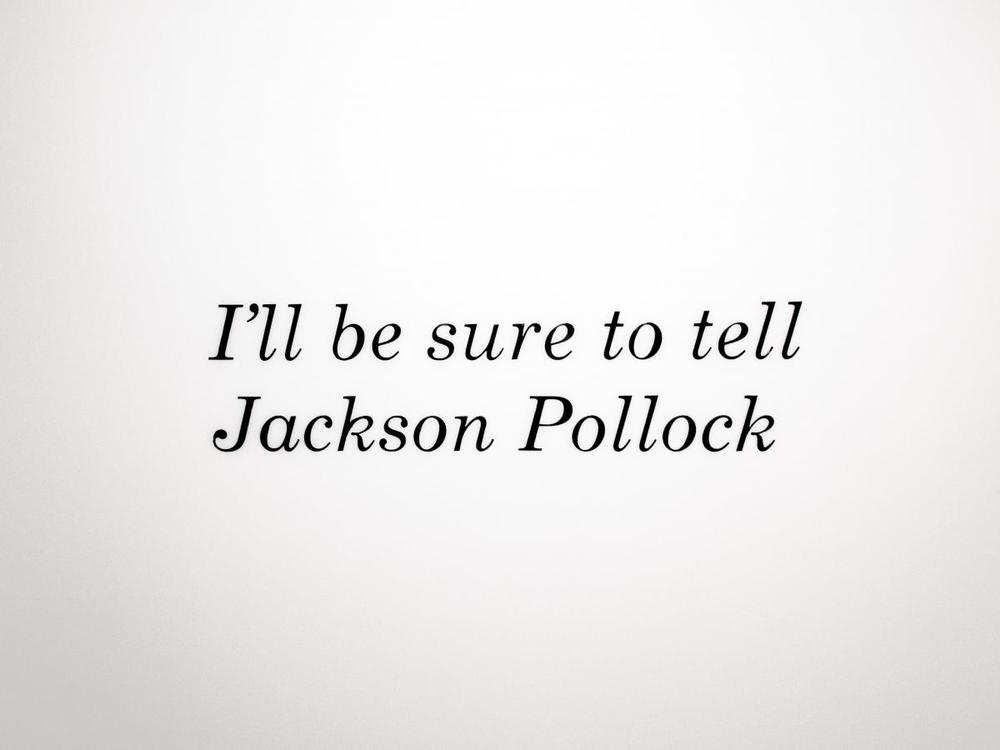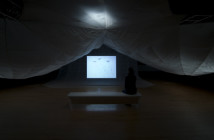This week I sat down and chatted with Michael Mittelman, founder, editor, and publisher of Aspect: The Chronicle of New Media Art. Aspect is a bi-annual DVD magazine dedicated to time-based work. They bring together artists and academics to display and talk about contemporary media art. Aspect recently celebrated their 100th published work of art. In honor of this they are selling their entire back catalog in a collection for $200. So, 100 works of art for $200. Michael and I chatted about their history, the reason they exist, and just why it is so hard to get time-based work seen.
James Nadeau: Tell me a little bit about the origins of Aspect. I understand the desire to have something (like the magazine) as a teaching tool...
Michael Mittelman: And also something for artists to use to disseminate their own work. It sort of came out of both at the same time because that is the type of work that I was making. I was really kind of shocked that magazines still wanted still images, grants still wanted still images. I was like "you know, DVD has come of age, what's going on here?" So I looked into what it would cost and DVD replication compared to VHS replication is very cheap. Of course, I didn't realize what producing a DVD was like, pumping out the discs is the cheapest part. So, I came up with the idea and presented it to George Fifield, as something he should do with that Boston Cyberarts Festival in between festivals. So he looked at my proposal and he said it looks great and I submitted it for funding. It was rejected and I am a little embarrassed about it now – I recently came across it – and I'm not surprise that it was rejected.
But then I literally had a bank error in my favour and I talked to Ruth, my wife, and, she's always been supportive, and she said go ahead. So I did the first issue and my only costs at that time were actually stamping the DVDs because I convinced people to help me out with it or free. The way that I worked out, I only needed to sell 80 copies during the Boston Cyber Arts Festival. During the course of the festival I sold 8. So I certainly didn't break even.
JN: And what year was this?
MM: This was six years ago so... 2003? That sounds about right. So I didn't break even but I'm stubborn. So I said, you know I'm gonna keep going. I decided basically on January 1st that I was going to do it. And I had to go to press March 15th. I had two and a half months to pick the artists, record the audio, design the DVD, do all the production work on the DVD, and get it to the plant and get the audio mastered and so on and so forth. I picked all the commentators. I just approached people I knew. One of the commentators I approached was Bill Arning who said, "I really don't know this work but my job is to talk about art so if you need me to talk about it for five minutes I certainly can." And he did. But my realization after that was that it would be important if there was a better relationship between the commentator and the artist. And I made it a prerequisite that the artist and the commentator come together, so that they have an existing relationship. For the next issue I decided to get as far away from Boston as possible so it didn't seem like this was a "Boston only" thing. And we did Artists of the West Coast.
JN: And how did this issue come together?
MM: Well, I was pretty desperate for work as I didn't have any connections on the west coast. I approached the curators I knew and they knew some people. And I approached some artists that knew... actually I approached one artist that I knew and he submitted some work. I also got a couple... it has been an open call since this issue... and one that I got was from a curator that had been recommended to me. She wanted to work with this guy named Anthony Discenza so she sent me his material. And at first his gallery said "no way. We don't do 50% of anything." So he actually made a piece and said that it wasn't for the gallery, this is not for sale, this was purely for publication. I looked at the piece and I did not get it. She (the curator) had been highly recommended, and I was pretty desperate so I said OK. What happens is that I accept the piece based upon the documentation of the piece and some blurb about what the commentator will say, but not the full commentary. So I said OK. And then I got the commentary from her and she spoke of ideas of image, and I looked at the piece and thought "I completely get this piece now. This is my favourite now. And that made me realize that the format was actually something that would work. It wasn't just distributing works by artists but having this second channel of audio commentary was really valuable to understanding the work.
JN: And it adds a pedagogical aspect to it that is really tough to get across with video art or media art.
MM: Exactly, with any media art. What's nice is that, since then, the commentators have gotten broader and broader and the audience has gotten broader and broader. And different commentators just bring a different approach and I really like that. That variety is what makes it successful and makes it interesting. I was working with a commentator that I had never worked with before. So, we set up recording sessions wherever they are in the world. And this woman was in California. She called me up at the end of the session and she said, "you know, this guy can patch the recording into the phone and you can tell me whether or not you like it." And I said that I didn't need to hear it. I said. "no, I don't know you but I don't need to." And that faith is what has made this successful. We are leaving it up to you and letting you do what you do best. Doing that is what has made this a success. It is not my point of view. It is not my vision. It is a distributive vision. And it has gotten me this far. So, I said "I'm sure it will be fine."
JN: Also, that kind of micro managing wouldn't seem to work with artists and academics. We all cringe at that type of thing.
MM: Right, and it also ... you know the best sort of compliment I get about the success of Aspect is when people disagree about which was the best and which was the worst piece in a given issue. If people hate opposite pieces then I'm doing a great job.
JN: You get two opposing opinions about the same piece...
MM: Exactly. And then I know I'm doing something right.
JN: So how long did you manage to do this by yourself?
MM: Two, two and a half years. And I was really kinda done. It was either bring someone in or quit doing this. There were plenty of reasons to let this thing go and plenty of times where I considered this. So I brought Liz Nofziger on board and she just brought a whole new level of energy to it.
JN: So you are semi-annual now, correct?
MM: Yes, yes, twice a year. We've always had plans to become four times a year but we don't have the staff or the momentum. And twice a year is actually fine. We've also taken on interns. And the interns have played a really integral part of Aspect. They come in and bring their own perspectives, their own opinions. They make editorial decisions along with the rest of us. We all review submissions together. There have been cases where we bring interns in who have knowledge of specific areas that we want to explore. For example, the performance issue. We didn't know anything about performance. And that is the goal of Aspect: to disseminate information. And the first place we look for holes in knowledge is at ourselves. So we brought in one person who could tell us that this piece was about this and that performance was about that.
JN: And who was this?
MM: This was Julia Handschuh. She worked on volume nine. And we've brought in interns for production work and ultimately hire them to work on more issues.
JN: When did you realize that you were on to something with Aspect?
MM: CAA (the conference for the Collage Art Association) came to Boston. I think it was 2005 or 2006. And for the first time ever they were offering these things called "table top displays." It was $600 dollars instead of thousands of dollars and limited to non-profits. So we got a table and we printed a brochure that we took with us. And we figured we'd hand out a couple hundred of the brochures. In two and a half days we'd sold more DVDs than we'd sold in the previous three years. We were the belle of the ball. People were literally lining up and running up to our booth. Other venders were asking us what we were selling, why is everyone here and not at their booth? We realized that this is our market. The art education market is our market. There are other people who are into it and enjoy it but that is our primary market. So, we've begun to focus on those areas. We've always gone to art fairs: Art Basel, the Armory Show in New York. And those have been OK. But there isn't the same hunger because the people who go to art fairs also go to all the shows. We serve the niche of the people who can't for one reason or another.
JN: You get the people who really are stuck at a university somewhere and can't...
MM: You know, about three years ago we got a request and I called everyone in the room. "You got to come and see this." It was from Locked Bag, 1372, Tasmania, Australia. So this is somebody who is stuck somewhere. And we are now in, most, not all but a lot of major universities. And there are a lot of people who are now looking at this.
JN: How about the perspective of the artists?
MM: The video comes directly from the artist. We don't edit it at all. It really is "how do you see your work?" And that is also why we don't let the artists talk about their own work. I feel that if talking about it is the best way to understand your work then it should have been a spoken word piece not whatever format it was in. An artist can make the work but someone else has to talk about it.
JN: And to some degree some artists just can't do that to begin with.
MM: Yeah, right. And that is something that has worked pretty well for us. And ultimately is really is about building a history, building a memory, and building an archive. And that is what is great about what we are selling, the 100 for 200. The work doesn't go out of date. It is just as useful as the day they came out. So old Aspects never go out of date. And that is what is great about it. When people discover us they buy the whole thing. All the back issues. There is value even in the works that they don't like.
Aspect: The Chronicle of New Media Art
"100 for $200 — ASPECT offers 100 new media works for just $200 " is a limited time offer that expires on December 31st, 2009.
Mittelman images are via the MIT website.




